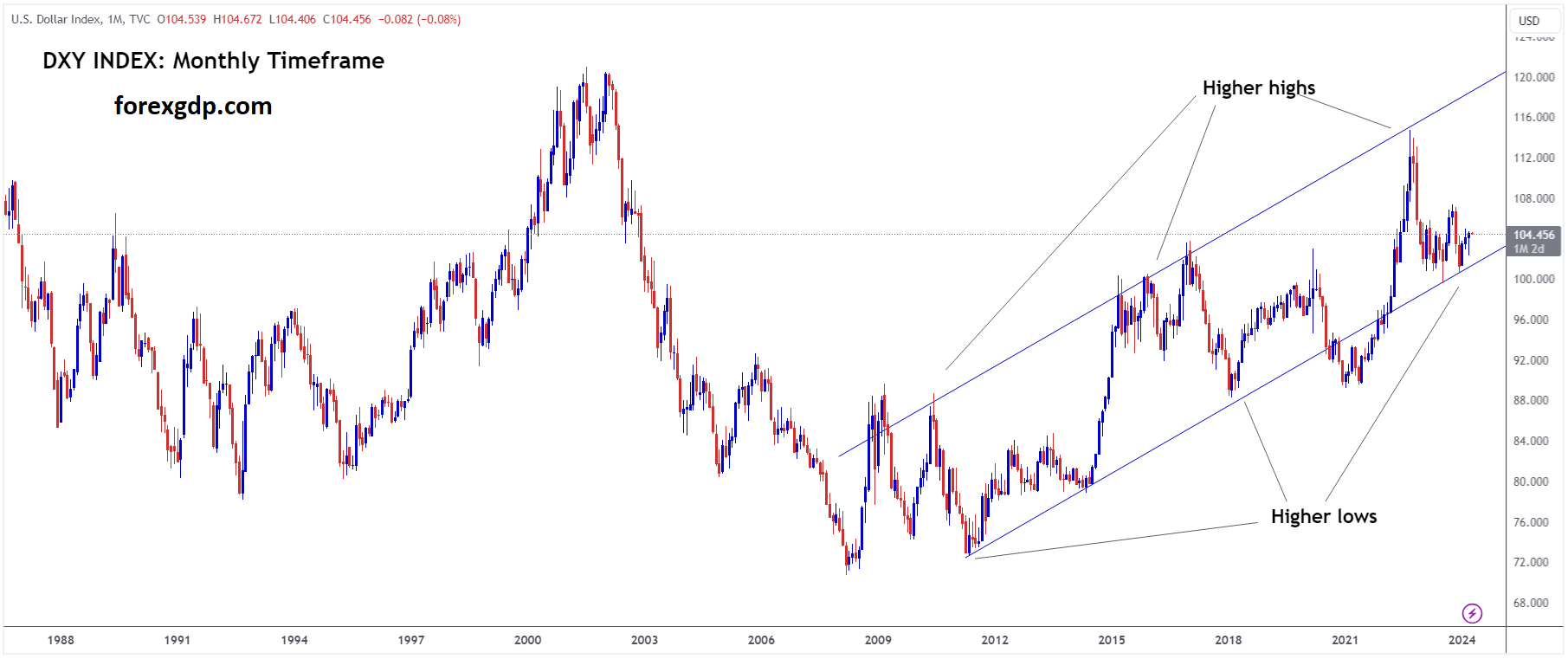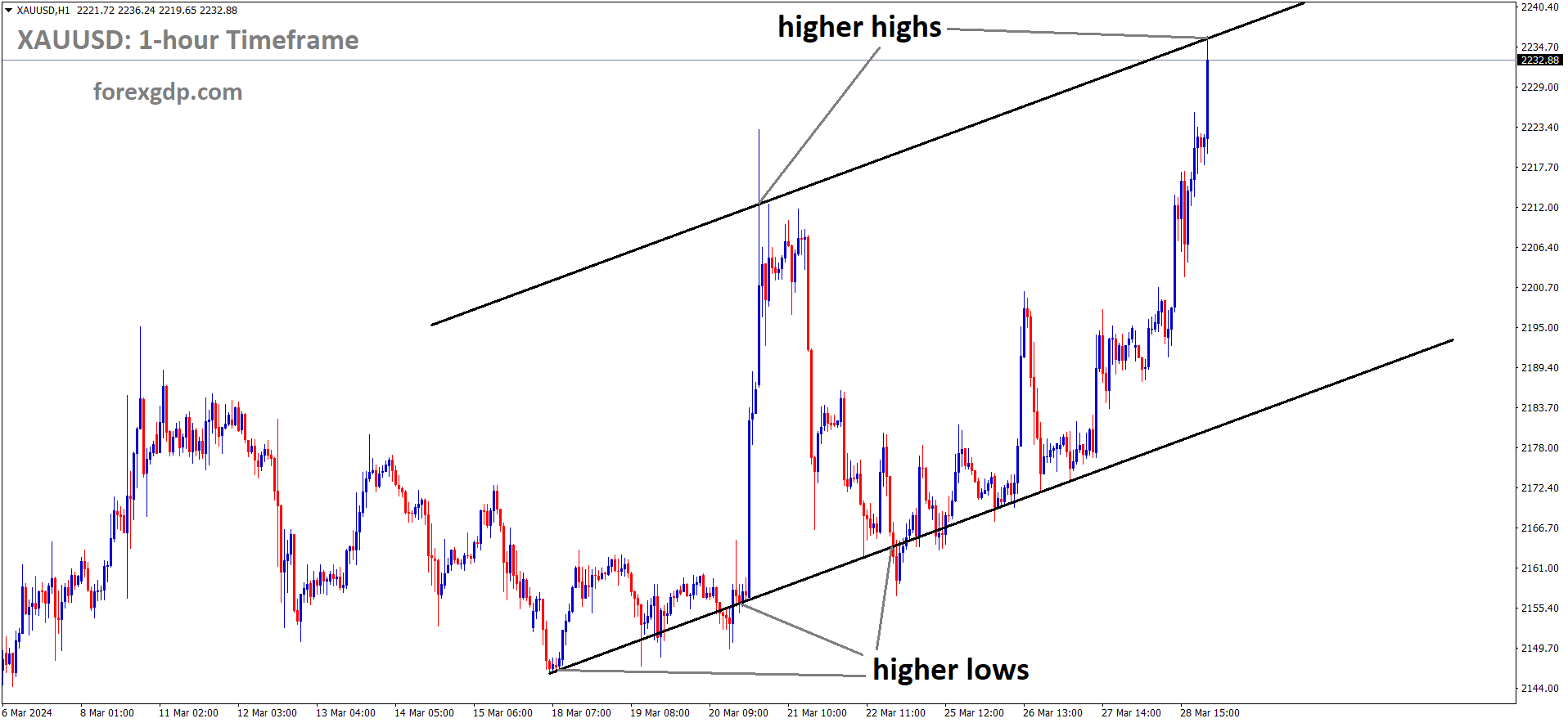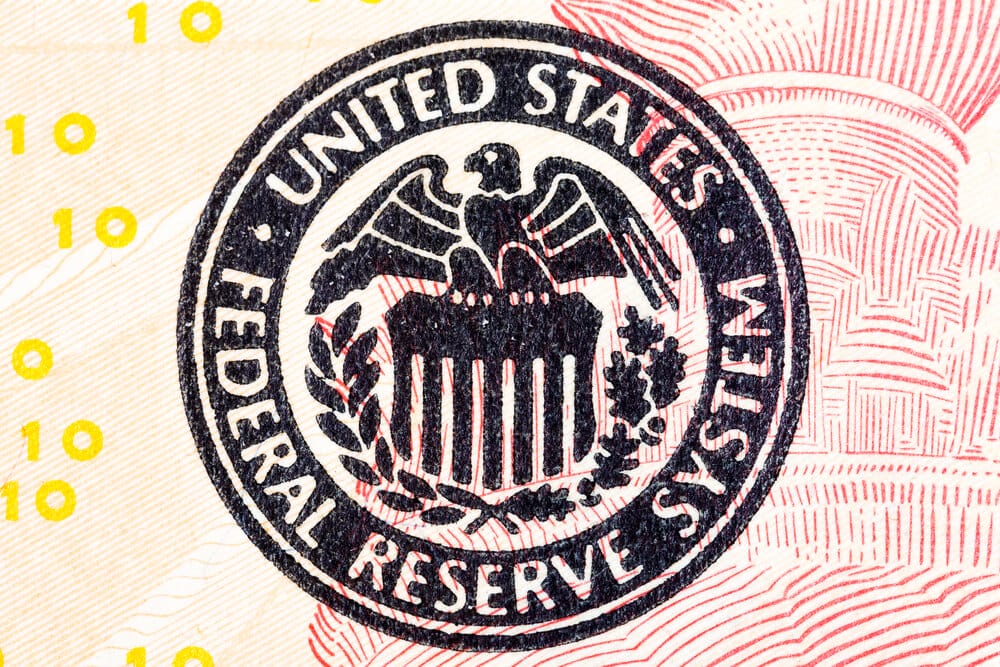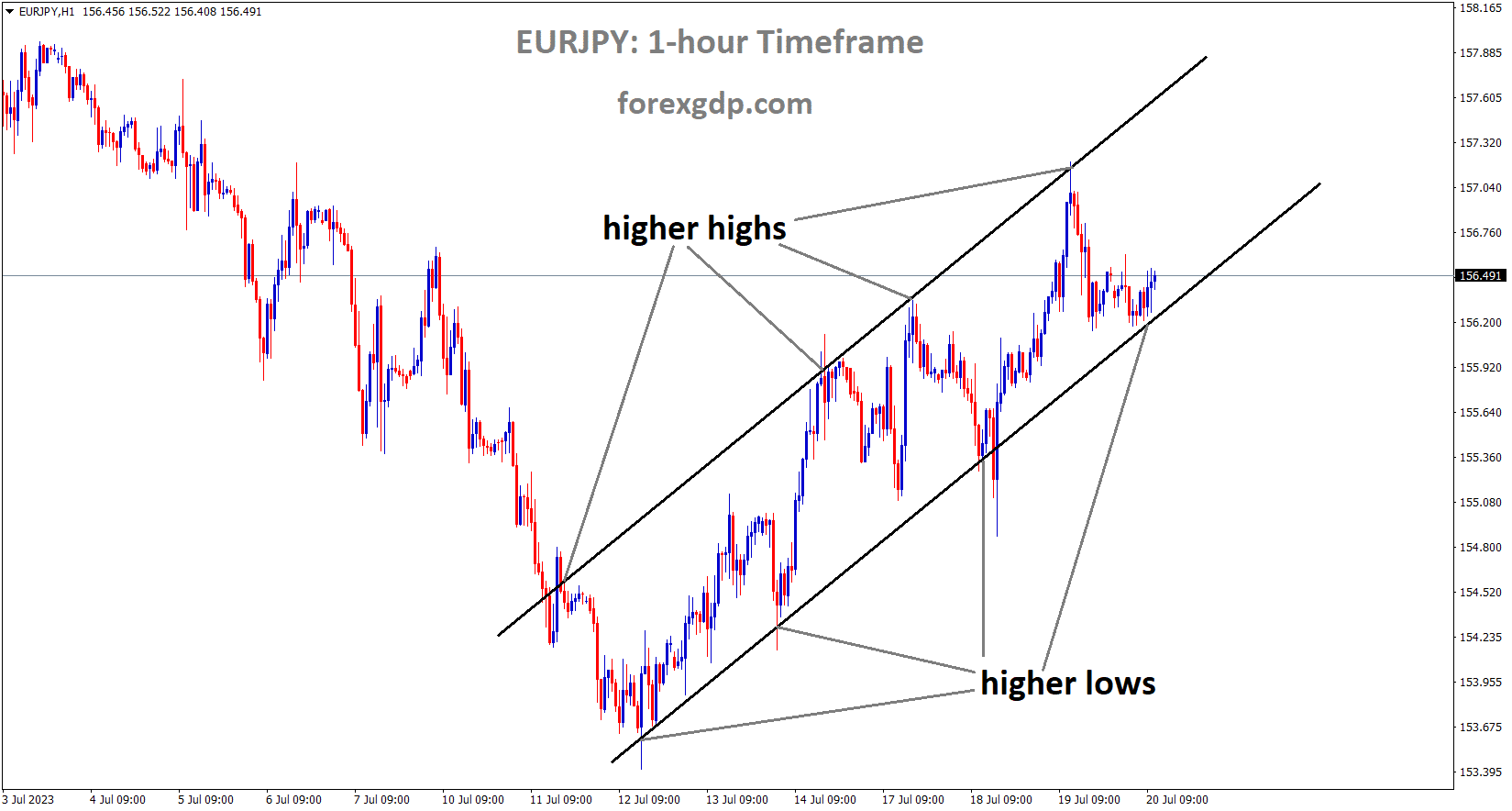USD: Fed’s Key Inflation Gauge Up 2.8% in Feb, as Expected
US Core PCE index data for the month of February came at 2.5% in February month from 2.4% in January month. Consumer spending is higher in the US economy, Holiday market today, no reaction after the data published.
In February, the inflation rate aligned with expectations, potentially postponing any imminent interest rate cuts by the Federal Reserve. The data, sourced from the personal consumption expenditures price index (PCE), excluding volatile components such as food and energy, indicated a 2.8% increase on an annual basis and a 0.3% uptick from the previous month. These figures mirrored forecasts provided by Dow Jones.
USD Index Market Price is moving in Ascending channel and market has reached higher low area of the channel
Meanwhile, the broader PCE index, which includes food and energy prices, exhibited a 0.3% monthly rise and a 2.5% annual surge. Although the annual rate remained below the Federal Reserve’s target of 2%, it still indicated sustained inflationary pressures over the past three years.
A breakdown of the inflation components revealed that escalating energy costs primarily drove the headline inflation figure, registering a notable 2.3% increase. Additionally, the food index saw a marginal 0.1% uptick. Goods prices experienced a more significant increase, rising by 0.5% compared to a 0.3% increase in services prices. This divergence contradicted the previous year’s trend, where services prices surged by 3.8% while goods prices actually declined by 0.2%.
Notable contributors to inflation pressures included international travel services, air transportation, and the motor vehicles and parts category. Consumer spending also exhibited robust growth, expanding by 0.8% during the month, surpassing initial estimates. This surge in spending, coupled with a slight increase in personal income by 0.3% (slightly below the projected 0.4%), hinted at the possibility of further inflationary pressures in the economy.
The release of this data comes shortly after the Federal Reserve decided to maintain its benchmark short-term borrowing rate, citing insufficient progress on inflation. In their latest rate projections, members of the Federal Open Market Committee (FOMC) hinted at the possibility of three quarter-percentage point cuts in the coming years.
Market expectations suggest that the Federal Reserve will maintain its current stance on interest rates in the near term, with potential rate cuts anticipated later in the year. Market sentiment, as reflected in the CME Group’s FedWatch measure of futures market action, aligns with the FOMC’s projections for future rate adjustments.
USD: PCE Data: Fed’s Preferred Inflation Index Up Moderately in Feb
US Core PCE index data for the month of February came at 2.5% in February month from 2.4% in January month. Consumer spending is higher in the US economy, Holiday market today, no reaction after the data published.
XAUUSD is moving in an Ascending channel and the market has reached the higher high area of the channel
In February, prices in the United States experienced a moderate increase, while the cost of services excluding housing slowed notably, potentially leaving room for a June interest rate cut by the Federal Reserve.
According to the Commerce Department’s Bureau of Economic Analysis, the personal consumption expenditures (PCE) price index rose by 0.3% last month. This followed a revision for January, where the PCE price index was adjusted upward to show a 0.4% increase instead of the previously reported 0.3%.
Over the 12 months leading up to February, PCE inflation advanced by 2.5%, compared to a 2.4% increase in January. Economists surveyed by Reuters had predicted a 0.4% monthly increase and a 2.5% year-on-year rise in the PCE price index.
While price pressures are showing signs of subsiding, the pace has slowed compared to the first half of the previous year. Energy prices notably rose by 2.4% in February, contributing to inflationary pressures.
Bill Adams, Chief Economist for Comerica Bank, noted that inflation moderation faced some challenges, particularly with the increase in energy prices. However, core service prices, excluding energy and housing, experienced a modest 0.2% rise in February, following a 0.7% surge in January. On a year-over-year basis, core PCE inflation slowed to 3.3% from 3.5%, marking its lowest level since March 2021.
Federal Reserve officials, who left the policy rate unchanged at the current range of 5.25%-5.50%, anticipate three rate cuts this year. Market expectations align with the possibility of the first rate reduction occurring in June. Fed Governor Christopher Waller stated that while there’s currently no urgency to cut the policy rate, he didn’t rule out the possibility of trimming borrowing costs later in the year.
Excluding volatile food and energy components, the PCE price index increased by 0.3% last month, following an upwardly revised 0.5% gain in January. Core inflation, which excludes food and energy, rose by 2.8% year-on-year in February after a 2.9% increase in January. The Fed closely monitors PCE price measures to gauge progress toward its 2% inflation target, aiming for monthly inflation readings of 0.2% over time to bring inflation back to target.
PCE services inflation, excluding energy and housing, increased by 0.2% last month after a 0.7% surge in January. Policymakers are closely observing this “super core” inflation indicator to assess their effectiveness in combating inflation.
The report also revealed a notable increase in consumer spending, which accounts for more than two-thirds of U.S. economic activity. Consumer spending surged by 0.8% last month after a 0.2% increase in January.
USD: US Core PCE Inflation Hits 2.8% YoY, Supporting Fed’s Long-Term View
US Core PCE index data for the month of February came at 2.5% in February month from 2.4% in January month. Consumer spending is higher in the US economy, Holiday market today, no reaction after the data published.
USD Index Market Price is moving in box pattern and market has rebounded from the support area of the pattern
In the United States, inflation, as measured by the change in the Personal Consumption Expenditures (PCE) Price Index, saw a slight uptick to 2.5% on a yearly basis in February, according to the report from the US Bureau of Economic Analysis released on Friday. This figure marked a marginal increase from the 2.4% recorded in January and was in line with market expectations. On a monthly basis, the PCE Price Index rose by 0.3%, slightly below the anticipated 0.4%.
The core PCE Price Index, which excludes volatile food and energy prices, also showed a year-on-year increase of 2.8%, matching analysts’ estimates. The monthly figure stood at 0.3%, aligning with expectations. Notably, January’s core PCE Price Index was revised upward to 2.9% year-on-year and 0.5% month-on-month.
Market Reaction to PCE Inflation Data:
The impact of the PCE inflation data on the market was somewhat subdued due to the widespread Easter Holiday. Despite this, the US Dollar experienced mild selling pressure in response to the news, although it is poised to conclude March with significant gains. The implications of the data suggest a challenging outlook for those anticipating upcoming rate cuts in the US.
The upward revision for January and the stable February figures indicate that the Federal Reserve may have a compelling case for maintaining higher interest rates for a prolonged period. Investors will closely monitor employment-related figures in the upcoming week, evaluating them alongside the inflation data. Ultimately, macroeconomic indicators may influence policymakers to postpone rate cuts beyond June or to proceed cautiously with only two modest 25 basis points (bps) cuts throughout 2024.
The reaction in stock futures was reflective of renewed concerns, as they ticked lower following the release of the inflation data.
Don’t trade all the time, trade forex only at the confirmed trade setups.
Get more confirmed trade setups here: forexgdp.com/buy/











